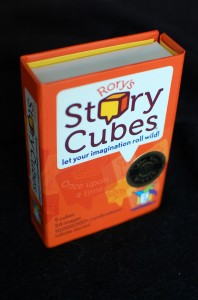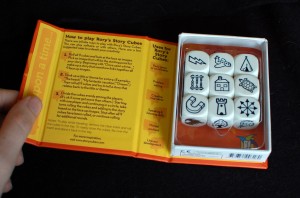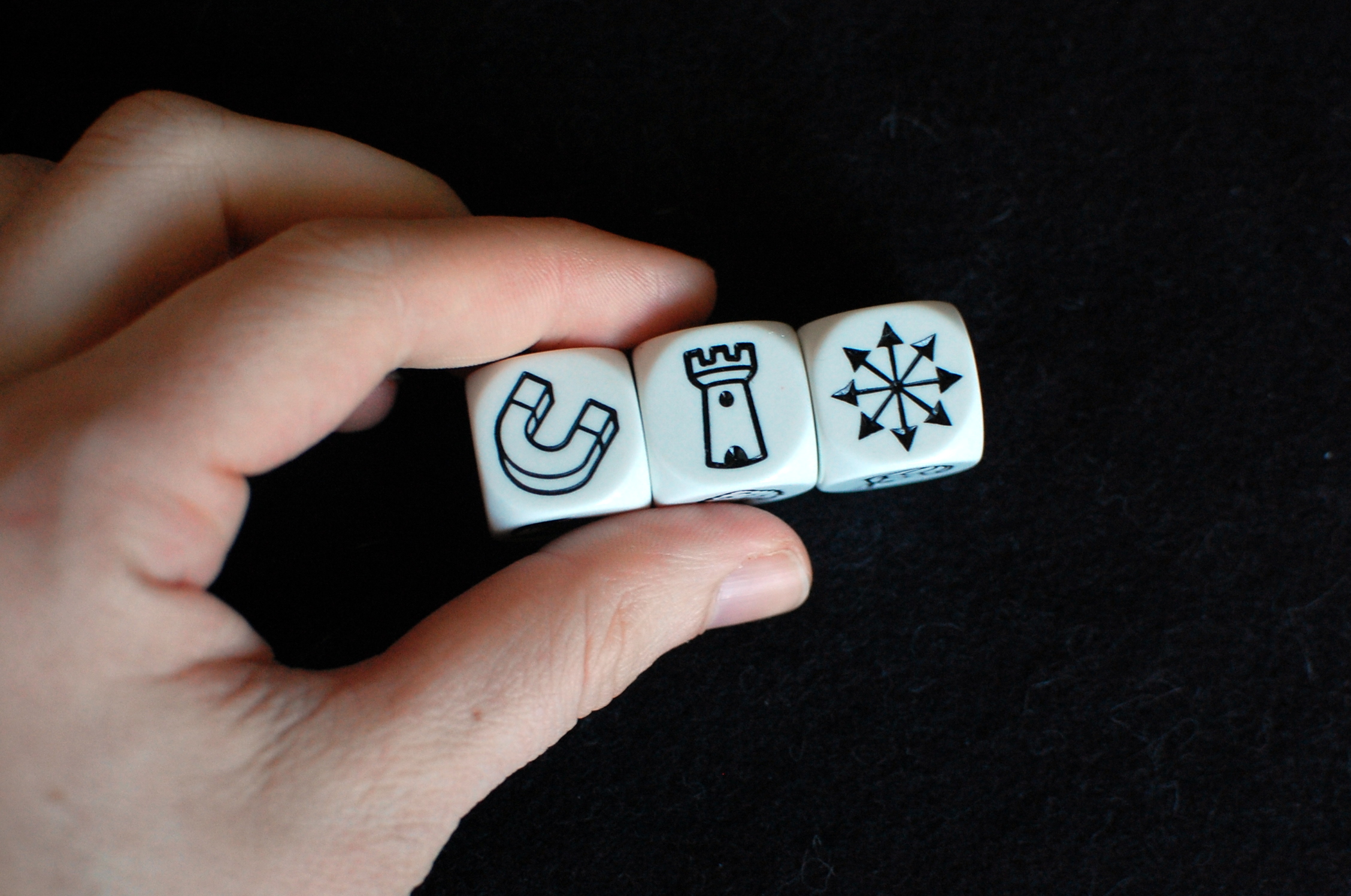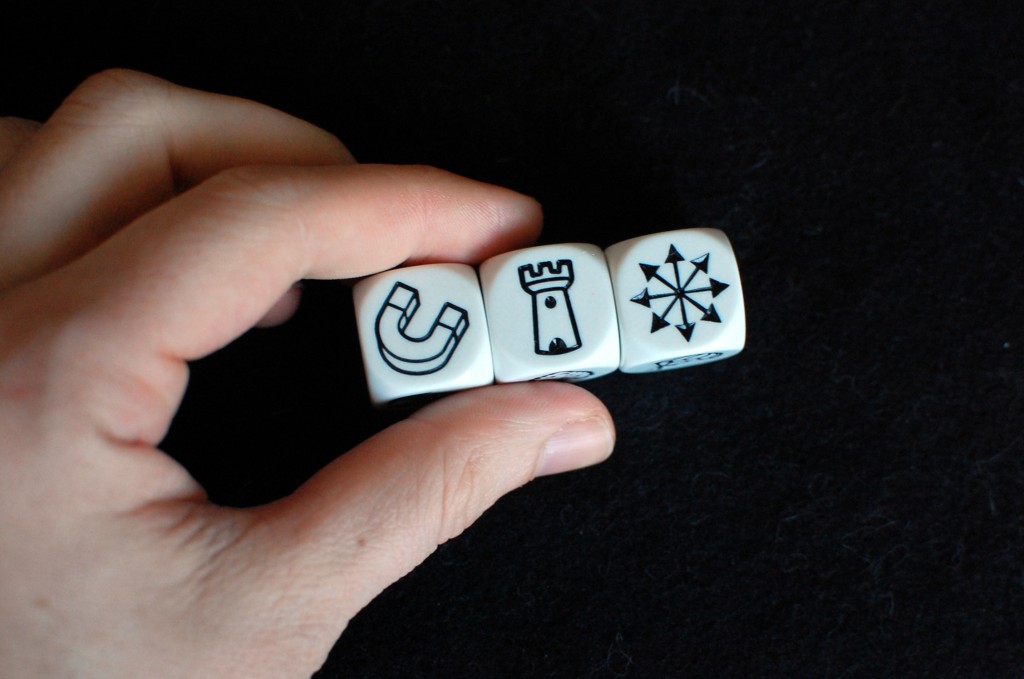 Before I begin, allow me to give credit where credit is due for this wonderful idea: I got this idea from Laura on her blog (click here). I was so thrilled to see her idea of using these “story cubes” for improvisation with piano students!
Before I begin, allow me to give credit where credit is due for this wonderful idea: I got this idea from Laura on her blog (click here). I was so thrilled to see her idea of using these “story cubes” for improvisation with piano students!
Meet “Rory’s Story Cubes.”
Rory’s Story Cubes consist of a set of 9 dice with all kinds of pictures on their faces. I think English teachers use these as a starting point for writing stories.
Piano teachers can use them too. =)
Let me tell you about how I’ve been using this fun new prop.
During a piano lesson, I gave my student all of the dice and asked her to roll them. Here’s what they look like:
After we rolled the dice, I asked her to choose three of the rolled dice that she liked best. Here’s what she chose:
Next I told her we were going to be creating a piece of music with three sections. Each die represents one of those sections. I asked her about each picture, and asked her how we could use the piano to tell the story on the dice.
Although these three pictures seem to be entirely random, my 6-year-old student did not find them to be such in the least. Why, of course we can make a story/improvisation out of such random things! Older students, of course, would be more likely to choose three related symbols to use for their improvisation rather than three random ones. =)

Here’s what she came up with for our improvisation:
- The magnet: Since magnets stick to things, my student thought we should hold down the keys for a long time. She suggested that we use only half notes during this section of our piece.
- The tower: Since the tower is tall, my student thought we should use the upper register of the piano only. She also thought we should play forte. So I told her that I would be resting during this “B” section so that she could play the tower stuff at the top of the piano.
- The arrow thingy: My student interpreted this symbol to represent being on a journey. She thought we should play running eighth note figures to show we were traveling around quickly in all different directions.
We played our duet improvisation together following the ideas she established, and I was delighted at the result! Her imagination was completely ignited and we had a great time making the “story” she created come to life.
Yes, you might think our improvisation it would sound a little crazy on the piano, and I can’t completely disagree. It can get a little crazy sometimes, but usually our improvisations sound pretty good. I did ask her to choose a pentascale to use for the tower and arrow sections. I usually provide an ostinato figure with a simple harmonies that will sound good with almost anything she plays. The magnet sections in particular sounded remarkably good, considering that we were randomly hitting half notes all over the piano.
We had so much fun! And all this in just five minutes. I am looking forward to finding more ways to use Rory’s Story Cubes in the future. I think they are perfect for inspiring both improvisation and composition activities! In a group setting, you could give one to each student and allow them to choose whatever picture they like best on their die.
You can find the original set of Rory’s Story Cubes on Amazon by clicking here (this is an affiliate link: if you purchase this item through this link, Color In My Piano will benefit). Gamewright has also released two other types: the “Actions
” set and the “Voyages
” set. You can also get a deal by ordering all three sets together: Rory’s Story Cube Complete Set
.
Have fun, and let me know if you decide to order a set and what you plan to do with your story cubes!





These are great, I am going to put this on my studio with list. I love great ideas for improv as it isn’t my strongest suit and thus not my most confident teaching area! These will be a great teaching tool!
Hi Joy,
I’m so glad to see what you’ve done with this idea!
Laura
Thanks, Laura! Couldn’t have done it without you. ;D
I absolutely love this idea! I do improv with students based off of a fun piece title – we brainstorm sounds, smells etc. that makes them think of their topic and then we work on how to represent these on the piano, but this is one step better than that!
I just ordered the dice from the link and I am looking forward to receive it. I bought the pattern play series -book 1 but not sure how to use it. My students are beginners and early elementary, do you have suggestion? may be I could use the dice with the book?
Thanks
Loraine
I don’t know much about the Pattern Play books. I did buy the first book in the series, but haven’t gotten around to figuring out how to use it. I have heard fabulous success stories about the books, and have heard that Forrest and Akikko’s presentations about their books at conferences are very good too. I need to see one of these presentations so I can learn more about using them effectively!